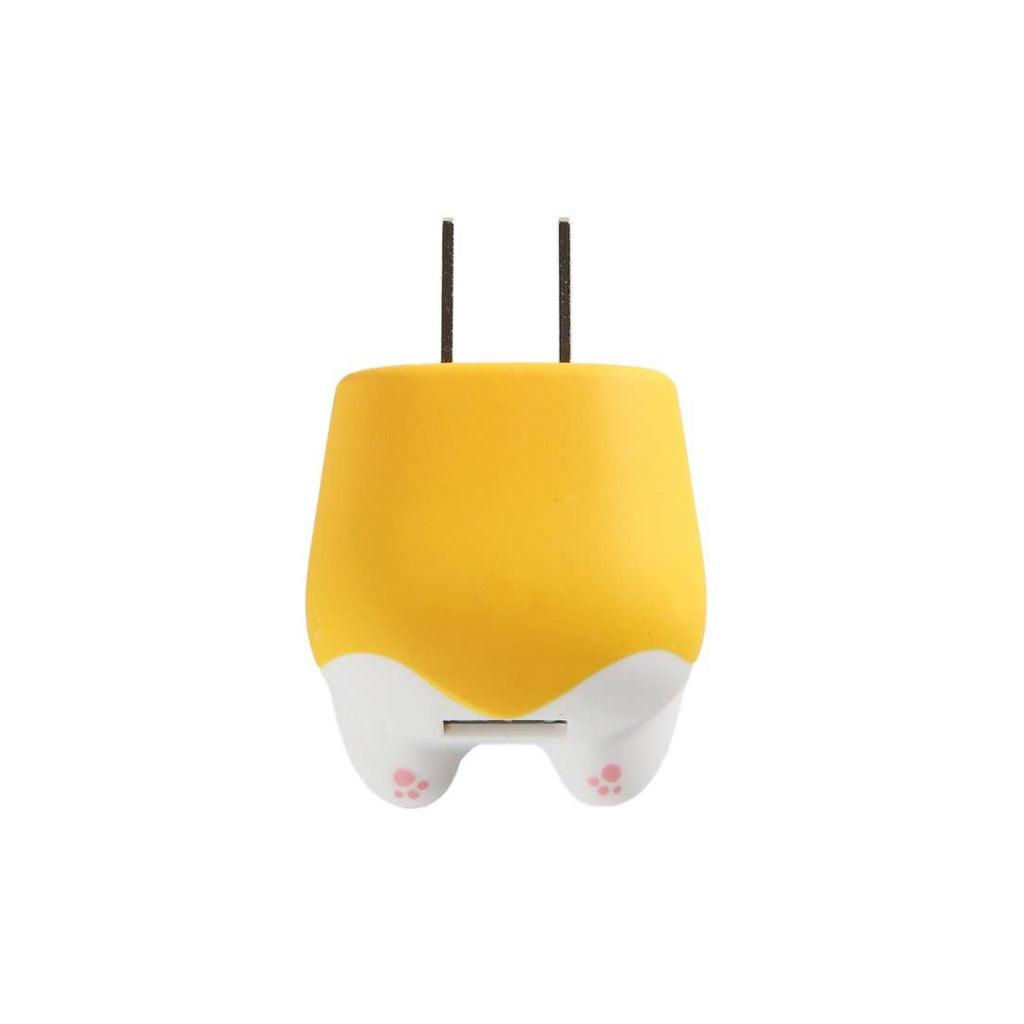Strainers for Kitchen: Types, Uses, and Tips for Choosing the Best One
"Strain with ease, cook with precision - find the perfect strainer for your kitchen needs."
Introduction:
Strainers are essential tools in any kitchen, used for a variety of tasks such as draining pasta, rinsing fruits and vegetables, and sifting dry ingredients. With so many options available on the market, it can be overwhelming to choose the best one for your needs. In this article, we will discuss the different types of strainers, their uses, and provide tips for choosing the best one for your kitchen.
Types of Kitchen Strainers
If you spend a lot of time in the kitchen, you know how important it is to have the right tools at your disposal. One tool that often gets overlooked but is essential for many cooking tasks is a kitchen strainer. Strainers come in various shapes and sizes, each designed for specific uses. In this article, we will explore the different types of kitchen strainers, their uses, and provide some tips for choosing the best one for your needs.
One of the most common types of kitchen strainers is the mesh strainer. These strainers are typically made of metal or plastic and have a fine mesh screen that allows liquids to pass through while trapping solids. Mesh strainers are perfect for straining pasta, rinsing fruits and vegetables, and sifting dry ingredients like flour or powdered sugar.
Another popular type of kitchen strainer is the colander. Colanders are typically larger than mesh strainers and have larger holes, making them ideal for draining larger quantities of food like pasta or vegetables. Colanders often come with handles or feet to make them easier to use and can be made of metal, plastic, or silicone.
For more specialized tasks, there are also strainers designed for specific uses. For example, a tea strainer is a small, fine mesh strainer designed to strain loose tea leaves from brewed tea. A skimmer is a flat, shallow strainer with a long handle, perfect for removing foam or skimming fat from soups and sauces.
When choosing a kitchen strainer, it's essential to consider the material it's made of. Metal strainers are durable and can withstand high temperatures, making them ideal for straining hot liquids. Plastic strainers are lightweight and easy to clean but may not be as durable as metal. Silicone strainers are flexible and heat-resistant, making them perfect for straining hot foods or for use in non-stick cookware.
It's also essential to consider the size of the strainer. A larger strainer is ideal for draining pasta or washing vegetables, while a smaller strainer is perfect for sifting dry ingredients or straining tea. Consider how you will be using the strainer most often and choose a size that fits your needs.
When shopping for a kitchen strainer, look for one with a comfortable handle that is easy to grip. A strainer with a long handle is ideal for reaching into deep pots or bowls, while a strainer with a short handle is perfect for use over a sink. Some strainers also come with hooks or loops for hanging, making them easy to store when not in use.
In conclusion, kitchen strainers are essential tools for any home cook. Whether you're straining pasta, rinsing fruits and vegetables, or sifting dry ingredients, having the right strainer can make your cooking tasks much more manageable. Consider the type, material, size, and handle of the strainer when choosing the best one for your needs. With the right strainer in your kitchen arsenal, you'll be well-equipped to tackle any cooking task that comes your way.
Uses of Kitchen Strainers
Kitchen strainers are an essential tool for any home cook. They come in various shapes, sizes, and materials, each serving a specific purpose in the kitchen. From draining pasta to rinsing fruits and vegetables, strainers are versatile and practical. In this article, we will explore the different types of kitchen strainers, their uses, and provide tips for choosing the best one for your needs.
One of the most common uses of kitchen strainers is for draining pasta. Whether you are making spaghetti, fettuccine, or penne, a strainer is essential for removing excess water from the cooked pasta. Simply place the strainer in the sink and pour the pasta into it, allowing the water to drain away while keeping the pasta in the strainer.
Another popular use for kitchen strainers is for rinsing fruits and vegetables. Before cooking or eating produce, it is important to wash them thoroughly to remove any dirt or pesticides. A strainer makes this task easy and efficient, allowing you to rinse multiple items at once without losing any down the drain.
In addition to draining pasta and rinsing produce, kitchen strainers can also be used for straining liquids such as broth or soup. By pouring the liquid through the strainer, you can remove any solids or impurities, resulting in a smoother and cleaner final product.
When it comes to choosing a kitchen strainer, there are several factors to consider. The first is the material of the strainer. Stainless steel strainers are durable and easy to clean, making them a popular choice for many home cooks. Plastic strainers are lightweight and affordable, but may not be as long-lasting as stainless steel.
Another factor to consider is the size of the strainer. Larger strainers are ideal for draining pasta or rinsing large quantities of produce, while smaller strainers are better suited for straining liquids or sifting dry ingredients.
It is also important to consider the shape of the strainer. Some strainers have a bowl shape, while others have a flat bottom. The shape of the strainer will depend on your specific needs and preferences.
When shopping for a kitchen strainer, be sure to look for one with a sturdy handle that is comfortable to hold. This will make it easier to use the strainer and prevent any accidents while draining hot liquids.
In conclusion, kitchen strainers are a versatile tool that can be used for a variety of tasks in the kitchen. From draining pasta to rinsing produce, strainers are essential for any home cook. When choosing a kitchen strainer, consider factors such as material, size, and shape to find the best one for your needs. With the right strainer in your kitchen, you can make cooking and meal preparation easier and more efficient.
Tips for Choosing the Best Kitchen Strainer
If you spend a lot of time in the kitchen, you know how important it is to have the right tools at your disposal. One tool that often gets overlooked but is essential for many cooking tasks is a kitchen strainer. Whether you're rinsing fruits and vegetables, draining pasta, or sifting dry ingredients, a good strainer can make your life a lot easier. In this article, we'll discuss the different types of kitchen strainers, their uses, and provide some tips for choosing the best one for your needs.
When it comes to kitchen strainers, there are several different types to choose from. The most common type is the mesh strainer, which is typically made of stainless steel and has a fine mesh screen that allows liquids to pass through while keeping solids contained. Mesh strainers come in various sizes, so you can choose one that best fits your needs.
Another popular type of strainer is the colander, which is typically larger and has larger holes than a mesh strainer. Colanders are great for draining pasta, rinsing fruits and vegetables, and even washing grains like rice. They come in a variety of materials, including stainless steel, plastic, and silicone.
For more specialized tasks, there are also strainers designed for specific purposes. For example, a flour sifter is a type of strainer that is used to aerate and break up clumps in flour before baking. There are also tea strainers, which are used to strain loose tea leaves from brewed tea.
When choosing a kitchen strainer, there are a few things to consider. First, think about what you'll be using it for most often. If you primarily need a strainer for draining pasta, a colander with larger holes may be the best option. If you'll be using it for sifting dry ingredients, a mesh strainer with a fine screen will be more suitable.
It's also important to consider the size of the strainer. Make sure to choose one that is large enough to accommodate the amount of food you'll be straining. If you often cook for a large group, you may want to invest in a larger strainer to make your job easier.
The material of the strainer is another important factor to consider. Stainless steel strainers are durable and easy to clean, making them a popular choice for many home cooks. Plastic strainers are lightweight and affordable, but may not be as durable as stainless steel. Silicone strainers are flexible and easy to store, but may not be as sturdy as metal strainers.
When shopping for a kitchen strainer, be sure to read reviews and compare prices to find the best option for your needs. Look for strainers that are dishwasher safe for easy cleaning, and consider investing in a set of different sizes to cover all your straining needs.
In conclusion, a kitchen strainer is a versatile tool that can make many cooking tasks easier and more efficient. By choosing the right type of strainer for your needs and considering factors like size and material, you can ensure that you have the best tool for the job. So next time you're in the market for a new kitchen strainer, keep these tips in mind to make the best choice for your kitchen.
Stainless Steel Strainers

If you're someone who loves spending time in the kitchen, you know how important it is to have the right tools at your disposal. One essential tool that every kitchen should have is a strainer. Strainers are versatile kitchen gadgets that can be used for a variety of tasks, from draining pasta to rinsing fruits and vegetables. In this article, we'll take a closer look at stainless steel strainers, their types, uses, and provide some tips for choosing the best one for your kitchen.
Stainless steel strainers are a popular choice among home cooks and professional chefs alike. They are durable, easy to clean, and resistant to rust and corrosion. Stainless steel strainers come in a variety of shapes and sizes, making them suitable for a wide range of kitchen tasks. From fine mesh strainers for sifting flour to colanders for draining pasta, there's a stainless steel strainer for every need.
One of the most common uses for stainless steel strainers is draining pasta. A colander with small holes is perfect for this task, allowing you to easily drain the water from your cooked pasta while keeping the noodles in the pot. Stainless steel strainers can also be used for rinsing fruits and vegetables, straining soups and sauces, and sifting dry ingredients like flour and powdered sugar.
When choosing a stainless steel strainer for your kitchen, there are a few things to consider. First, think about the size of the strainer you need. If you frequently cook for a large family or like to make big batches of food, a larger strainer will be more practical. On the other hand, if you have limited storage space or only cook for one or two people, a smaller strainer may be sufficient.
Another factor to consider is the type of mesh on the strainer. Fine mesh strainers are ideal for sifting dry ingredients and straining liquids, while larger mesh strainers are better suited for draining pasta and rinsing fruits and vegetables. Some stainless steel strainers also come with handles or hooks for easy hanging, which can be convenient for storage.
When shopping for a stainless steel strainer, be sure to check the quality of the material. Look for strainers made from high-quality stainless steel that is sturdy and resistant to rust and corrosion. Avoid strainers with flimsy handles or loose mesh, as they may not hold up well over time.
In conclusion, stainless steel strainers are versatile kitchen tools that can make cooking and meal prep easier and more efficient. Whether you're draining pasta, rinsing fruits and vegetables, or sifting dry ingredients, a stainless steel strainer is a must-have in any kitchen. When choosing a stainless steel strainer, consider the size, mesh type, and quality of the material to ensure you get the best one for your needs. With the right stainless steel strainer in your kitchen, you'll be well-equipped to tackle any recipe that comes your way.
Mesh Strainers
If you spend a lot of time in the kitchen, you know how important it is to have the right tools at your disposal. One tool that often gets overlooked but is essential for many cooking tasks is a mesh strainer. Mesh strainers come in various shapes and sizes, and they can be used for a wide range of tasks in the kitchen. In this article, we will explore the different types of mesh strainers, their uses, and provide some tips for choosing the best one for your needs.
Mesh strainers are versatile tools that can be used for a variety of tasks in the kitchen. They are typically made of metal or plastic and have a fine mesh screen that allows liquids to pass through while trapping solids. Mesh strainers come in different sizes, with smaller ones being ideal for straining liquids like broth or sauces, and larger ones being perfect for sifting flour or draining pasta.
One of the most common uses for a mesh strainer is to strain liquids. Whether you are making homemade broth, straining out seeds from a fruit puree, or separating solids from a sauce, a mesh strainer is the perfect tool for the job. The fine mesh screen allows you to strain out unwanted particles while keeping the liquid intact.
Mesh strainers can also be used for sifting dry ingredients like flour or powdered sugar. Simply place the strainer over a bowl and pour the dry ingredients into the strainer. Use a spoon or spatula to gently push the ingredients through the mesh, creating a smooth and lump-free mixture.
When it comes to choosing the best mesh strainer for your needs, there are a few things to consider. First, think about the size of the strainer. If you will be using it primarily for straining liquids, a smaller strainer will suffice. However, if you plan on using it for sifting dry ingredients or draining pasta, a larger strainer may be more suitable.
Another factor to consider is the material of the strainer. Metal mesh strainers are durable and can withstand high temperatures, making them ideal for straining hot liquids. Plastic mesh strainers are lightweight and easy to clean, but may not be as durable as their metal counterparts.
When shopping for a mesh strainer, look for one with a sturdy handle that is comfortable to hold. A handle with a loop or hook for hanging is also a convenient feature for storage. Additionally, consider the size of the mesh holes – finer mesh is ideal for straining liquids, while larger mesh is better for sifting dry ingredients.
In conclusion, mesh strainers are versatile tools that are essential for any kitchen. Whether you are straining liquids, sifting dry ingredients, or draining pasta, a mesh strainer can make your cooking tasks easier and more efficient. When choosing a mesh strainer, consider the size, material, and handle design to find the best one for your needs. With the right mesh strainer in your kitchen arsenal, you will be well-equipped to tackle any cooking task that comes your way.
Colanders for Kitchen Use
If you spend a lot of time in the kitchen, you know how important it is to have the right tools at your disposal. One essential tool that every home cook should have in their kitchen is a strainer or colander. These handy devices are perfect for draining pasta, rinsing fruits and vegetables, and even sifting dry ingredients. In this article, we'll take a closer look at the different types of strainers available, their uses, and some tips for choosing the best one for your needs.
When it comes to strainers, there are several different types to choose from. The most common type is the colander, which is typically made of metal, plastic, or silicone and has large holes for draining liquids. Colanders come in a variety of sizes, so you can choose one that best fits your needs. Another popular type of strainer is the mesh strainer, which is perfect for sifting dry ingredients or straining small particles from liquids. Mesh strainers are typically made of metal and have a fine mesh screen that allows liquids to pass through while trapping solids.
In addition to colanders and mesh strainers, there are also specialty strainers available for specific tasks. For example, a pasta strainer is designed specifically for draining pasta, with small holes that prevent noodles from slipping through. A rice strainer, on the other hand, has even smaller holes to prevent grains of rice from escaping. There are also strainers designed for rinsing berries, draining canned goods, and even sifting powdered sugar.
When it comes to choosing the best strainer for your needs, there are a few things to consider. First, think about what you'll be using the strainer for most often. If you frequently cook pasta, a colander with large holes is a must-have. If you do a lot of baking, a mesh strainer will come in handy for sifting flour and sugar. Consider the size of the strainer as well – if you often cook for a large family or group, a larger strainer will be more practical.
Another important factor to consider when choosing a strainer is the material it's made of. Metal colanders are durable and long-lasting, but they can be heavy and prone to rust. Plastic colanders are lightweight and easy to clean, but they may not be as durable. Silicone colanders are flexible and easy to store, but they may not be as sturdy as metal or plastic. Consider your own preferences and needs when choosing the material for your strainer.
In addition to the type and material of the strainer, there are a few other things to keep in mind when making your selection. Look for a strainer with sturdy handles that are comfortable to hold, especially if you'll be draining heavy pots of pasta or vegetables. Consider the shape of the strainer as well – some colanders have a wide base that sits securely in the sink, while others have a more narrow shape that can be used over a bowl or pot.
In conclusion, having a good strainer in your kitchen is essential for a variety of cooking tasks. Whether you're draining pasta, rinsing fruits and vegetables, or sifting dry ingredients, a quality strainer will make your job easier and more efficient. Consider the type, material, size, and shape of the strainer when making your selection, and choose one that best fits your needs. With the right strainer in your kitchen, you'll be well-equipped to tackle any recipe that comes your way.
Fine Mesh Sieves for Cooking
If you love spending time in the kitchen, you know how important it is to have the right tools at your disposal. One essential tool that every home cook should have in their kitchen is a fine mesh sieve. These versatile strainers are perfect for a variety of cooking tasks, from sifting flour to straining pasta. In this article, we'll take a closer look at the different types of fine mesh sieves available, their uses, and some tips for choosing the best one for your kitchen.
Fine mesh sieves come in a variety of shapes and sizes, each designed for specific tasks in the kitchen. The most common type of fine mesh sieve is the handheld strainer, which is perfect for sifting dry ingredients like flour or powdered sugar. These sieves typically have a handle and a fine mesh screen that allows you to easily sift out any lumps or impurities from your ingredients.
Another popular type of fine mesh sieve is the colander, which is perfect for straining pasta, vegetables, or fruits. Colanders typically have larger holes than handheld strainers, making them ideal for draining larger quantities of food quickly and efficiently. Some colanders even come with extendable arms or feet that allow you to place them over a sink or bowl for hands-free straining.
For more delicate tasks, like straining sauces or custards, a chinois sieve is the perfect tool. These conical-shaped sieves have an extremely fine mesh screen that can strain out even the smallest particles, leaving you with a smooth, silky sauce every time. Chinois sieves are also great for straining stocks or broths, as they can remove any impurities or solids from the liquid.
When choosing a fine mesh sieve for your kitchen, there are a few things to keep in mind. First, consider the size of the sieve and how you plan to use it. If you frequently cook for a large family or entertain guests, a larger colander may be more practical than a small handheld strainer. Additionally, think about the material of the sieve – stainless steel is durable and easy to clean, while silicone is flexible and heat-resistant.
It's also important to consider the mesh size of the sieve. Fine mesh sieves come in a range of sizes, from very fine to coarse. If you plan to use your sieve for sifting dry ingredients, a very fine mesh sieve is ideal. However, if you need to strain larger pieces of food, a coarser mesh sieve may be more appropriate.
When using a fine mesh sieve in the kitchen, there are a few tips to keep in mind to ensure optimal performance. First, always make sure to wash your sieve thoroughly before and after each use to prevent cross-contamination. Additionally, be gentle when using your sieve – avoid pressing down too hard on the mesh screen, as this can cause it to tear or warp.
In conclusion, fine mesh sieves are an essential tool for any home cook. Whether you're sifting flour, straining pasta, or making sauces, a fine mesh sieve can help you achieve the perfect texture and consistency in your dishes. By choosing the right type of sieve for your needs and following a few simple tips, you can make the most of this versatile kitchen tool.
Conclusion
In conclusion, strainers are essential tools in the kitchen for various tasks such as draining pasta, washing fruits and vegetables, and sifting dry ingredients. There are different types of strainers available, including mesh strainers, colanders, and fine-mesh sieves, each serving a specific purpose. When choosing a strainer for your kitchen, consider the material, size, and handle design to ensure it meets your needs and preferences. By selecting the right strainer, you can make cooking and food preparation more efficient and enjoyable.







